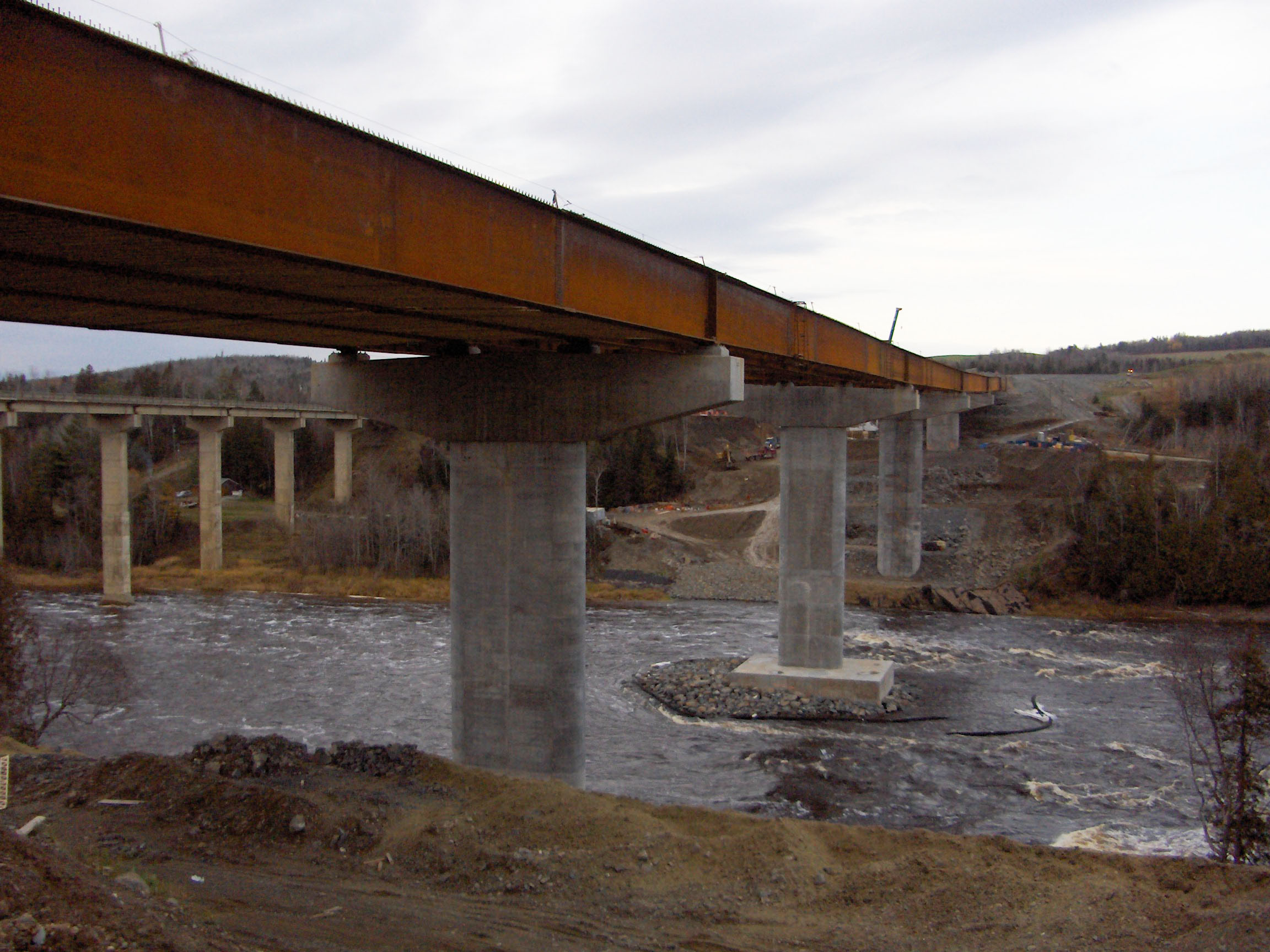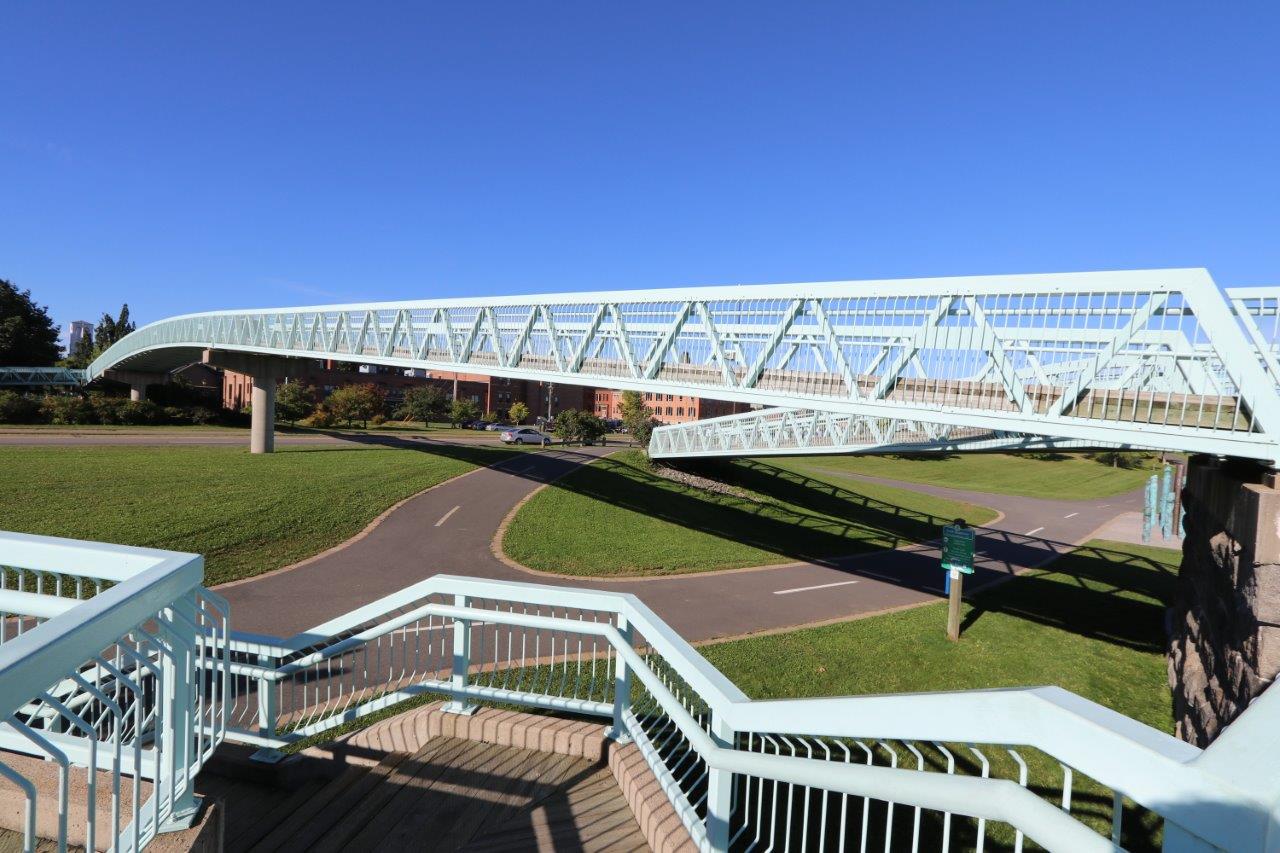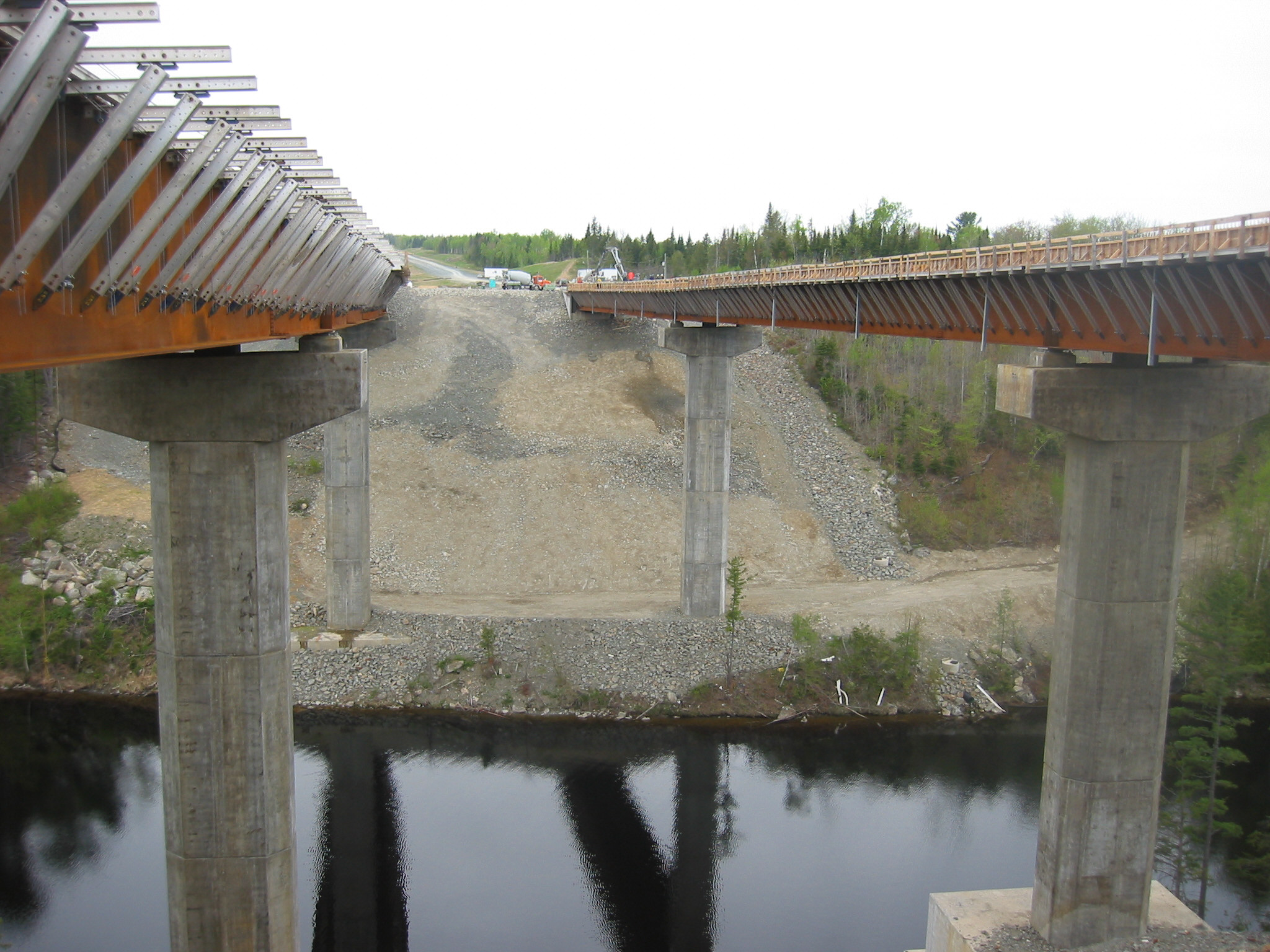This 12 span continuous, 2 lane, 342.5 m precast girder bridge crosses the Little Tracadie River estuary and was constructed in 2001.
Geotechnical considerations required the removal of unsuitable material and the construction of a new approach fill at the north end of the structure. The material to be excavated was below the fluctuating tidal water level. Shot rock was used to raise the approach fill above the tidal water level to the underside of the north abutment. The excavation of the unsuitable material was completed in a silt boom enclosure to conform with the environmental control requirements for the site.
The bridge superstructure consists of a concrete deck supported by NBDOT Type 1 precast, prestressed concrete reinforced girders. The superstructure was supported on economical pipe pile bents in an aggressive marine environment. At pier 1 and 11, H-pile leads were required to ensure anchorage into the bedrock. A cathodic protection system was developed to extend the life of the steel pipe piles considering the harsh marine environment.



